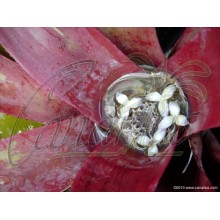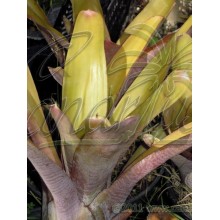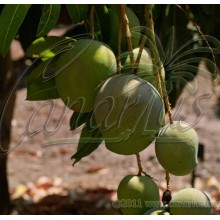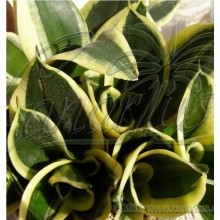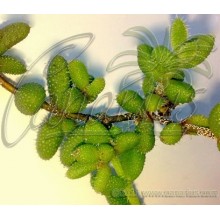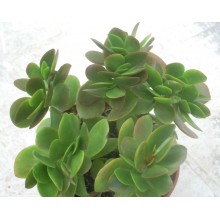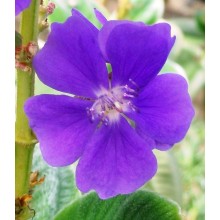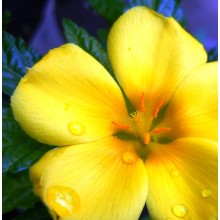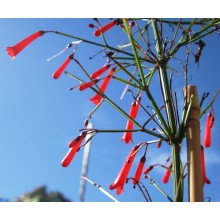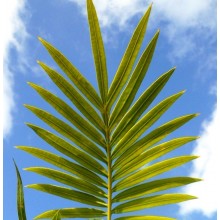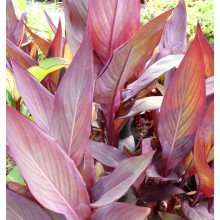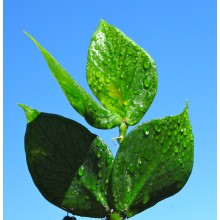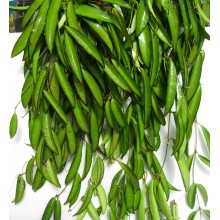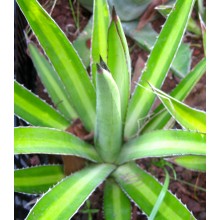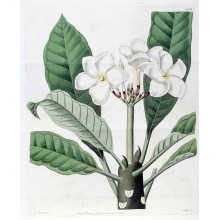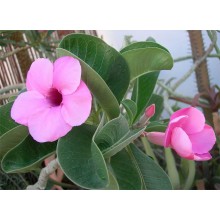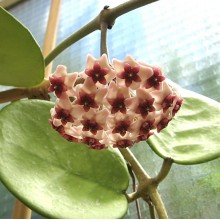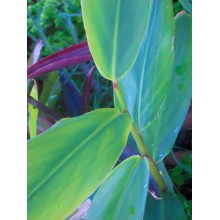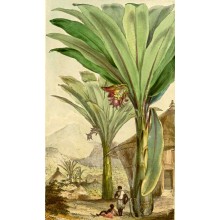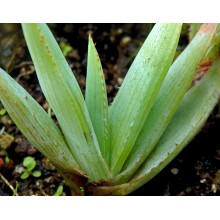¡Lo más vendido!
Top Sellers description

-
Neoregelia farinosa
Neoregelia farinosa
"Farina" means flour. This Neoregelia with bright pink leaves has a powdery-white coating. Neoregelia farinosa is easy but slow, tolerant of different light exposures. It can stand short light frosts in the coastal Mediterranean.
16,70 € -
Neoregelia spectabilis Wild Type
Neoregelia spectabilis Wild Type
Most of the Neo spectabilis grown in collections are selected clones or hybrids, even if they have been propagated through the years with the species name. Here we offer the true wild species as it happens to grow in nature, with stiff yellow-green leaves and the typical pink tips.
23,20 € -
Mangifera indica 'Kensington'
Mangifera indica 'Kensington'
This is one of the most sought after american mangos. It grows and fruits very well in non-tropical countries! It bears average sized, ovoid fruits with yellow-green skin. It has a low-average fibre presence. Early to mid-season.
52,30 € -
Sansevieria trifasciata cv Hahnii Jade Marginata
Sansevieria trifasciata cv Hahnii Jade Marginata
NEW ! - A “Hahnii” lacking any silvery spot or stripes. Miniature rosettes of dark green, glossy leaves. Uncommon, new addition to the Hahnii series.
10,80 € -
Delosperma echinatum
Delosperma echinatum
NEW ! - Three unrooted cuttings of 6-8 cm. beautiful, unusual succulent leaves, densely covered in glossy translucent "hairs". These are visible adaptations to catch moisture from fogs.
10,90 € -
Crassula x Pretoria Hybrid
Crassula x Pretoria Hybrid
NEW ! - This hybrid turns hot red in full sun. It came from Pretoria and it probably has "blood" of Crassula cultrata
10,50 € -
Tibouchina semidecandra
Tibouchina semidecandra
Evergreen Brazilian shrub with velvety leaves and showy blue-purple flowers. It is a classic of subtropical gardening, but it also thrives in warm mediterranean conditions. This species also grows in cool weather but it is damaged by frost.
16,50 € -
Turnera ulmifolia
Turnera ulmifolia
Small shrub from Central America and the Caribbean, called "yellow buttercup" because of its golden flowers. It is easy to grow in warm conditions and it is often used as a "filler" in mixed borders or other plantings.
14,80 € -
Russelia equisetiformis
Russelia equisetiformis
Ornamental plant, native to Central America. It is an evergreen perennial, with a weeping habit. Stems and leaves are a bright green. New growth starts erect and then bends over to form a graceful mound. Russelia flowers almost continuously, with glossy red hanging flowers. It is commonly known as Firecracker plant, Coral plant, Coralblow and Fountain plant.
18,50 € -
Cycas edentata
Cycas edentata
Edentata is one of the most beautiful of the coastal Asian cycads. Leaves are glossy, with golden prominent veins. Leaf bases and young stems are coated with a reddish-golden "fur". It is quite fast and easy to grow and just as hardy as the typical rumphii-circinalis.
121,00 € -
Canna indica 'Intrigue'
Canna indica 'Intrigue'
Purple leaved canna, commonly cultivated in Northern Tenerife. Thick purple leaves are held erect and have some bluish tones.
18,70 € -
Hoya polyneura
Hoya polyneura
This hoya looks very well when hanging, leaves are light green with darker green prominent veins. It's often called "fishtail hoya" because of the pattern of the veins.
11,90 € -
Hoya wayetii
Hoya wayetii
Hoya wayetii from the Philippines is a small sized plant with nice bicolored leaves. Dark red flowers are frequently produced during summer . Leaves are succulent with dark margins.
18,00 € -
Plumeria rubra - Wild Type
Plumeria rubra - Wild Type
This is a wild form of Plumeria rubra, not a hybrid or a selection as ALL the ones you will find in the trade. Wild types are tough guys from the coastal scrubs of Central America, able to withstand truly harsh conditions. It is very vigorous with large leaves. Flowers are white with a yellow center.
42,00 € -
Adenium boehmianum
Adenium boehmianum
The most delicate-looking of all the wild adeniums, this "bohemian" Adenium has pink flowers with rounded petals and round tipped spathulate leaves.
30,50 € -
Hoya obovata - LARGE
Hoya obovata - LARGE
This is one of the best Hoyas for Northern climates. Easy blooming and cool-hardy. It has beautiful round, glossy leaves and well shaped , long-lived, white blossoms. Cont.= 8,5 cm 6-10 leaves.
27,00 € -
Alpinia nigra - Greater Galangal
Alpinia nigra - Greater Galangal
This mid-sized ginger with ornamental dark green foliage is used throughout SE Asia in many ways: rhizomes are cooked as seasoning or as a medicine. Young shoots are used in many Asian dishes. The inner portion of the aerial shoots is cooked as a vegetable and used in curry for flavouring. It can be kept in a pot for years and will stay small.
32,50 € -
Ensete ventricosum - Abyssinian Banana
Ensete ventricosum - Abyssinian Banana
This "mountain banana" comes from high-elevation tropical Africa and bears enomous leaves with a solid red rachis. It grows well in warm temperate and Mediterranean climates. It is not a true banana of the genus Musa, so its fruits are not edible. Nevertheless, in Africa the corms are regularly collected and eaten.
57,30 € -
Aloe lineata
Aloe lineata
South African species with blue-green leaves marked with longitudinal red lines (hence "lineata"). It branch from the base and produces erect stems, so it eventually becomes a dome-shaped shrub, 1-2 m tall.
13,40 €















